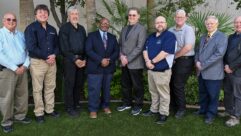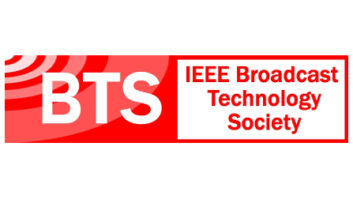Daniel Braverman is president of Radio Systems Inc. and founder of the African Broadcast Alliance.
JUBA, Sudan — Since 2003, the Sudan Radio Service, an “independent media service dedicated to peace and development in Sudan,” has broadcast balanced news and information in Arabic, English and several local languages in an effort to help promote peace and to help the country transition to democracy.
Because conditions in Sudan originally were deemed too unstable for SRS to establish studios and headquarters in the country, it has operated from Nairobi, the capital of neighboring Kenya, with MP3 audio files sent via the Internet for broadcast from offshore shortwave transmitters.
However, conditions in southern Sudan have improved since the 2005 peace agreement that ended the north-south civil war; and in 2008 it was decided that the time had come to move SRS operations to Sudan and to supplement its shortwave broadcasts with a 2 kW FM transmission from Juba, the southern Sudanese capital.


In January 2011, southern Sudan is scheduled to hold an independence referendum on whether it should remain part of Sudan. The vote is the culminating political event promised by the agreement that ended the 1983–2005 north-south war.
SRS is operated by the U.S.-based non-profit Education Development Center (EDC) and is funded by the United States Agency for International Development (USAID), which marks all its development assistance with the tagline “from the American People.”
As such, Radio Systems has always been especially proud to donate services and equipment through our charitable entity, the African Broadcast Alliance.
In 2003 and again in 2006 we helped build the original SRS broadcast studios in Nairobi. As challenging as those efforts were as our first African turnkey operation, we knew that building complete FM facilities in southern Sudan would be a whole new challenge.
From the onset, we were aware that every item needed on site would have to be purchased in the United States, pre-assembled, tested and transported to Juba. We not only had to provide the broadcast equipment, but also the hand tools, test equipment, studio buildings with bulletproof windows and the electrical plant, complete with a 50 kW generator and fuel tank.
For this level of planning we engaged Ken Tankel of Future Media Design to engineer, design and document the project. Ken knew that the slightest oversight could crash the project.


The Sudanese crew is credited with getting the SRS studios operational quickly once the containers were on site.
Three 20-foot shipping containers can make an acceptable on-site studio complex, if they are carefully pre-configured. But this preparation had to include internal insulated walls, a 10-ton air conditioning system and fully prewired broadcast systems.
The preassembly (performed the parking lot of our New Jersey factory) caused a three-month-long loss of employee parking spaces, but that was the least of our problems. International shipping regulations allow no openings or protrusions to the containers, so every component had to fit completely and securely inside, but also be easily and efficiently “extractable” upon arrival.
With daily high temperatures in Juba reaching 49 degrees Celsius and warmer, we were especially concerned about being able to get the HVAC systems up and running.
The three preassembled studio containers, a separate transmitter container and a 40-foot container holding the large self-supporting tower sections and other supplies were readied by September 2009 for their three-month cargo ship voyage to the Kenyan port of Mombasa. From Mombasa, the containers were trucked via road to Juba, the capital of southern Sudan.

The studio nears completion.

Daniel Braverman in a completed studio.
Despite tossing on the high seas and baking in the heat awaiting the arrival of our crews this summer, the contents sustained no damage, thanks to help from our vendors, particularly Vince Fiola of Studio Technology, whose cabinets never fractured or de-laminated, and Chris Kreger of RF Specialties of Montana, who carefully over-engineered the 36.5-meter self-supporting tower and foundation.
On-site we were fortunate to work with Jon Newstrom, chief of party for Sudan Radio Service. Jon, a former U.S. broadcaster, knew the unique security issues (such as the aforementioned need for bulletproof glass), specifications for a self-supporting tower (no guy lines to be cut) and location of all structures well within the razor-wire security walls.
Equipment Roundup The containerized studios for SRS were designed and documented by Future Media Design. They include Millenium network consoles and timing and audio distribution systems from Radio Systems, StudioHub+ wiring, Axia Audio Livewire Nodes and audio processing and studio furniture from Studio Technology. A Broadcast Electronics AudioVault system manages program playout.
Transmission is handled by a Broadcast Electronics FM transmitter and RPU equipment, as well as a Shively Laboratories multi-bay FM antenna. Power generation is via a Cummins Power Systems generator set, with power conditioning handled by APC products.
The customized shipping containers were provided by K&K International. Bard Manufacturing designed the heating, ventilation and cooling system. Security concerns also mandated no travel after dark on local roads, so the traditional pre-on-air all nighters were not an option. EDC mandated that Radio Systems be first on site with studios and transmission working and tested prior to the arrival of the SRS staff, even preceding the construction of the offices and the completion of the well and septic system.
Arriving our first day with only half of the security wall established redefined “turnkey,” but despite the heat, the daily monsoon-like drenching, the delays in firing up our local (and only) 50 kW power plant, studios and transmission were completed in the two-week on-site timetable allotted.
This was a testimony to our local Sudanese crews and above and beyond early morning customer service (due to the time difference) by Bob Surette of antenna manufacturer Shively and John MacDonald of Broadcast Electronics, which supplied the solid-state FM transmitter.
When the rig was brought to full power, range was a full 120 kilometers with full coverage of Juba and beyond.
Radio has time and time again been proven as a powerful and event-changing force in politics and nation-building. The people of southern Sudan now have a local FM voice to aid the peaceful transition from war to peace and democracy in Sudan — via the informative and educational broadcasts of Sudan Radio Service.












